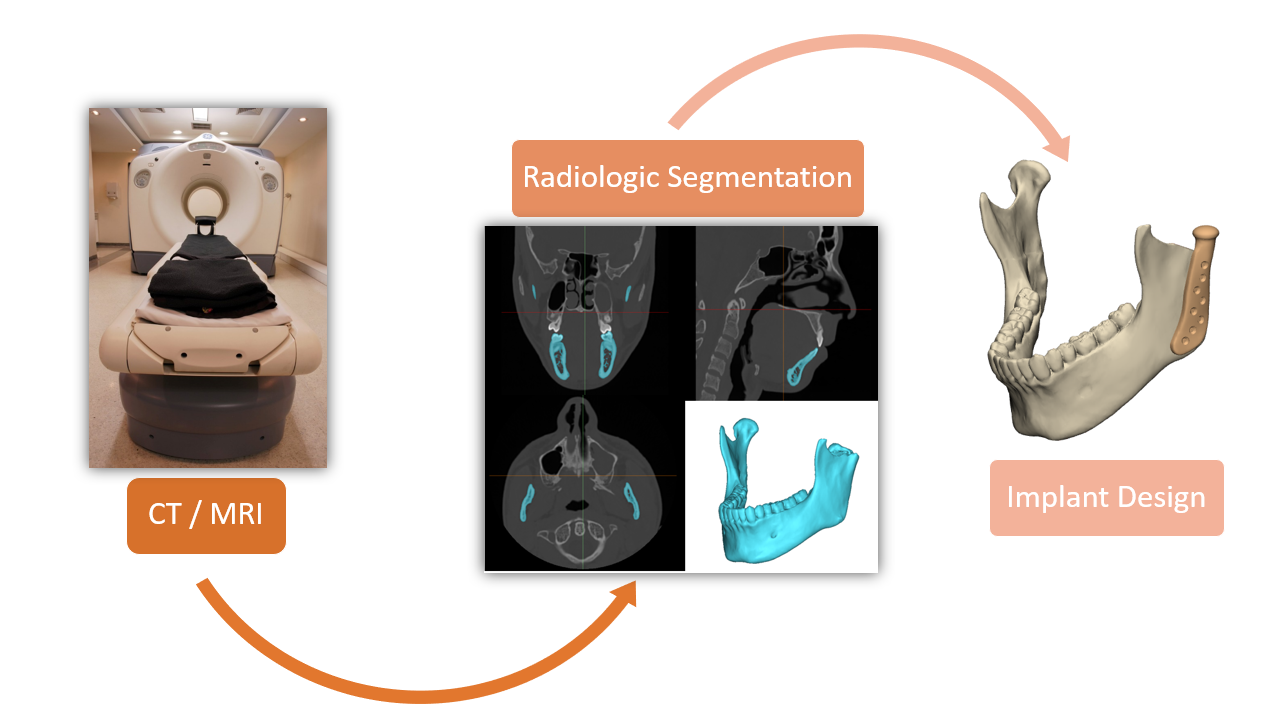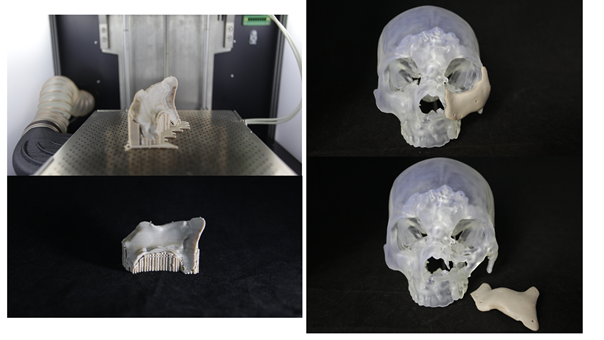The motivation behind Trabtech’s additively manufactured PEEK implants

Onur Demirak
Medical Application Engineer
Medical additive manufacturing provides an advantage in terms of the production of unique geometries of anatomical structures, in a time and cost-saving manner. Patient-specific implants, even small and complex parts that can be individually adapted to certain parts of the human body can be produced easily. There is a global trend to benefit from the advantage of additive manufacturing technologies. Materials are compared against each other in the medical field, which recently put conventional methods behind in the production method preference. Hence, it is not a question anymore “CNC or 3D printing?” but more a question of “Metal using SLM or high-performance polymer fabrication with FFF?”
One of the most important variables to be considered while answering this question is undoubtedly the underload behavior of the part. This issue, which is a research field in the branches of anatomy and physiology, plays a major role in the selection of additive manufacturing technology and materials according to the target anatomical region. The choice of technology and materials is carrying critical importance for additive manufacturing because the limitations and advantages of each technology differ, and this should be considered in the design process of the part.
In this article, we would like to mention the motivation behind Trabtech’s patient-specific PEEK implant studies.
Design and fabrication based on anatomical surface
In order to better understand the need for medical additive manufacturing, it would be helpful to focus on certain stages of the custom-made implant development workflow. What makes this process “custom-made” is the use of the patient’s own radiological images and the 3D digital model created from these images. Anatomical surfaces are not often smooth. Their features necessitate an adaptive implant surface, which is almost impossible to produce with conventional production methods. At this point, additive manufacturing, which has a wide range of production mechanisms and raw materials, comes into play. In medical applications, the technologies in which metal materials are generally used are known as selective laser melting (SLM) and electron beam melting (EBM), and the technologies in which high-performance polymers are used are known as selective laser sintering (SLS) and fused filament fabrication (FFF). The most used medical material for metal additive manufacturing is Ti64 alloy. The high strength, low weight, and excellent corrosion resistance of titanium and its alloys have enabled it to show great advantages to its alternatives in surgical applications for years.

Figure 1. The basic workflow for 3D design
The fabrication of medical-grade polymer parts using a three-dimensional printing technique called fused filament fabrication is an extremely new development for the biomedical world. When the follow-ups of the subtractively produced and implanted PEEK implants which still have intensive application in the fields of plastic surgery, orthopedics, traumatology, and neurosurgery are examined, high patient satisfaction rates can be observed. Another important advantage of PEEK is its radiolucency. Unlike metal implants, which produce artifacts in X-ray radiography, PEEK does not cause such artifacts. It offers the opportunity to evaluate closer to reality in the diagnosis and treatment stages.

Figure 2: 3D printing workflow of PEEK orbital implant
(Machine: Apium M220, Material: Evonik VESTAKEEP PEEK i4 3DF)
PEEK exhibits good biocompatibility, high chemical resistance, and low density (1.32 g/cm^2). It is also bio-inert, unlike Titanium alloys. Thanks to its bio-inertness, revision operations can be made with less bone loss. Unlike titanium and other metal materials with having elastic modulus in the range of 102 to 210 GPa, PEEK has an elastic modulus (3-4 GPa) closer to human cortical bone (14 GPa). Thus, the stress shielding and associated peri-implant bone resorption rate which can cause implant failure are reduced. Although metal implants are stronger than PEEK, PEEK has enough strength to fulfill the requirements of the especially maxillofacial region. It has been determined that the PEEK implants for cranioplasty withstand forces higher than those that cause skull fractures. In addition, this is ensured with less weight compared to titanium implants. Based on the available data, using PEEK as an implant material in various situations leads to positive results in many aspects outlined above.
Special thanks to Saif Ahmed Khaja and Apium Technologies GMBH Support Team for their outstanding contributions.
